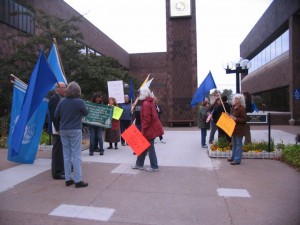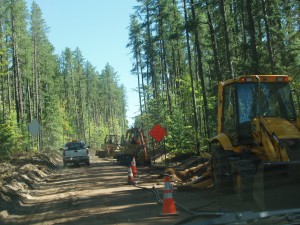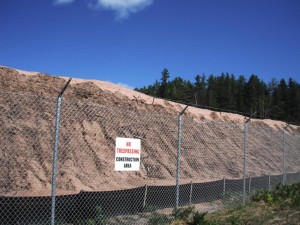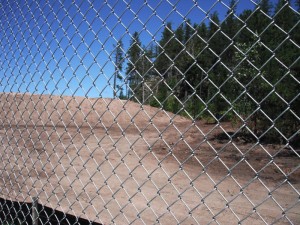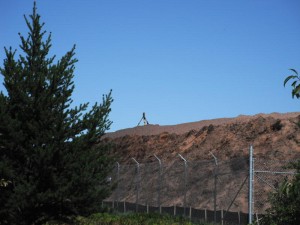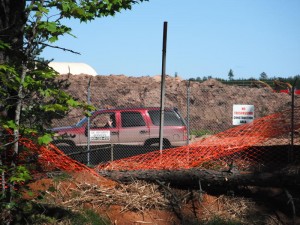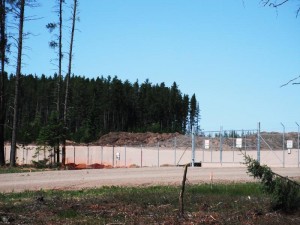Greetings All,
Below is an e-mail that was sent to several legislators. The hope was that, because there was a scheduled debate for an oil drilling ban in the Great Lakes by Michigan legislators, a debate to protect the water, the legislators would gladly add the proposed amendment to suspend sulfide and uranium mining at the same time.
On Friday it was heard on public radio, in essence, that the resolution to be debated was a political maneuver and there is really no intention to debate an oil drilling ban. If that is the case the legislators might be relieved if the debate is abandoned, along with any chances for an amendment to suspend sulfide and uranium mining activities. If the legislators start feeling some pressure from the public, they might feel the need to have the debate.
Session is scheduled to open on Wednesday, August 18th. A decision must be made by the legislature before September 2nd in order for the drilling ban to be placed on the ballot.
Please read the e-mail that was sent and support it by contacting those legislators that received the proposal.
Thank you very much.
Richard Sloat
Michigan Representatives Contact Information
Also, sign a live petition at http://www.cleanwateraction.org/mi/
Greetings Legislators,
The DEQ/DNRE has presented itself as incapable and possibly unwilling to follow the law in presenting its approval of a potentially dangerous mining project.
QUESTION: “Did you apply this section of the statute to your analysis?”
MAKI: “I did not, no.”
When Joe Maki, head of the mining team charged with reviewing the permit application for Kennecott’s Eagle Project, was asked under oath, if the team had applied a key portion of Michigan ’s nonferrous metallic mining law (Part 632) to its analysis, he replied, “I don’t believe so, no.”
Recent calls by Michigan legislators for a permanent ban on oil and gas drilling beneath the Great Lakes ask for the strongest possible measures to protect the Lakes. These measures must include the entire Great Lakes Basin . Ground and surface water contamination created by the mining industry ultimately affects the big lakes as well as local lakes, streams, and aquifers.
The Legislature must bring this issue up for debate. The process by which the mine permitting team has operated is obviously flawed. The current law is not being enforced and is inadequate for protecting the water, land and air for the citizens of Michigan and future generations.
We ask you to add an amendment to the proposed permanent ban on drilling beneath the Great Lakes , requiring the suspension of all non-ferrous and uranium mining activities while the Part 632 mining law and permitting process is reviewed. Accompanying this review, a thorough investigation should be conducted into ongoing noncompliance at the Kennecott Eagle Mine Project.
During the 2008 court proceedings in Lansing, Maki admitted that the DEQ did NOT comply with Number 3 of Section 63205, in Part 632, which states that the applicant for a mining permit has the burden of establishing that the mining operation “reasonably minimizes actual or potential adverse impacts on air, water and other natural resources and meets the requirements of this act.”
These state regulators, charged with the protection of our natural resources and environment, did NOT follow the law. MDEQ was presented with over 1,000 pages of unequivocal evidence that Kennecott’s sulfide mine proposal does not meet the state’s legal requirements and would result in profound pollution, impairment and destruction of air, water and other natural resources. The evidence was simply ignored.
Mining expert Jack Parker wrote a 33-page report outlining severe problems with the underground portion of Kennecott’s Eagle Mine permit application. The report, entitled KEMC Eagle Project: A Fraudulent Permit Application?, details Kennecott’s rock sampling and rock testing procedures, which are NOT representative of the ore body; lack of sound mining analysis to prevent the mine from collapsing; doctoring of design data; absence of case histories; potential for mine fires; misinterpretation of surficial geology and of horizontal rock stresses; and other pressing issues. Inexplicably, MDEQ did not react.
In the introduction to his report Parker writes “After three years of studying the application and related documents my original opinion has not changed, but I would add a conclusion that either the writers and all of the reviewers were not experienced and competent in mining and geology, or that their intent was to deceive, to ensure that permits would be issued without delay. Maybe both.”
Parker is currently preparing another report emphasizing that further review of the application shows that the mine will be UNSTABLE, and that those who ignore the warning will share the consequences.
Since the DEQ/DNRE did not and still does not have the expertise to evaluate applications for mining permits and have allowed noncompliance with Part 632, they should issue no permits. Current permits approved under Part 632 must be revoked, mining-related activities must cease, and the Eagle Mine Permit Application must be subjected to an independent scientific review. All reviews to date have NOT been independent. All have been based on defective Kennecott interpretations of the raw data.
The mining industry has acquired mineral leases on over 1 million acres in the U.P. The Upper Peninsula has 7.2 million acres in total, but due to the unique geological features of the Western U.P., current exploration and mining activities are concentrated in that area. In essence, one third of the western portion of our peninsula may be affected by mining-related activities and the hazards which accompany it. The cumulative effects from a multitude of poorly regulated mining projects could be devastating and irreversible.
In 2004, the EPA reported that 156 hardrock mining sites nationwide were on or had the potential to be on the National Priorities List (NPL) for cleanup under the Comprehensive Environmental Response, Compensation and Liability Act (CERCLA), with potential cleanup costs of up to $24 billion dollars.
Production of acid mine drainage ( AMD ) may occur during mine operations and may continue for many years after mines are closed and tailings dams are decommissioned from operation; consequently, evaluation of AMD is often a long-term proposition which usually adds up to high costs for site characterization, monitoring and cleanup.
Kennecott’s Eagle Mine project is the first to be permitted under Michigan ’s new Nonferrous Metallic Mining Regulations, enacted in December 2004, but there are others in the works. Kennecott owns mineral rights to nearly half a million acres in the U.P. and reports as many as six additional projects lined up. Two other mining companies, Orvana and HudBay, are expected to begin the permitting process within the next two years.
With the recent increase in mining exploration and granting of new mineral leases by the DNRE, the people of Upper Michigan , and many below the bridge as well, have grave concerns about the adequacy of current environmental safeguards.
Opposition to “sulfide mining” in Michigan includes university professors, area physicians, religious leaders, environmental groups, Native Americans, and sportsmen’s groups. In 2006, an organized petition drive collected more than 10,000 signatures objecting to the Eagle Project.
Recent articles and comments by Congressman Bart Stupak should have raised concerns from Michigan legislators about the hazards of non-ferrous metallic mining in Michigan . As he points out, Kennecott should be required to pay for independent baseline hydrological and geological studies, equivalent to U.S. Geological Survey (USGS) standards.
There are economic considerations, as well. Kennecott is being allowed to “high-grade” at the Eagle Mine site, as they did at the Flambeau mine, near Ladysmith , Wisconsin . They plan to take only the richest ore, making the rest difficult for someone else to come in and mine. That does not meet the requirement to recover the resources responsibly. Taxes and royalties should be increased dramatically. Adequate funding must be put in place, collected from the mining companies themselves, to provide for oversight and reclamation and to pay for damage done.
With debate scheduled to ban oil drilling in the Great Lakes, this is an opportune time for the legislators to add an amendment to the resolution, suspending all non-ferrous and uranium mining activities until the regulators get their act in order.
The flawed process demonstrated during the permitting of the Eagle Project has set a dangerous precedent, one that is likely to devastate our most precious resource, our fresh water, and the present and future generations that depend so much upon it.
Michigan ’s Constitution states, “The legislature shall provide for the protection of the air, water and other natural resources of the state from pollution, impairment and destruction.” Please consider our request and act on it in a timely manner. It is imperative that you do so.
Thank you for your time and consideration.
Catherine Parker and Richard Sloat, on behalf of the concerned citizens of this state.
